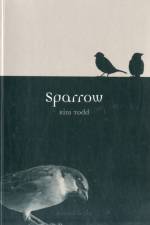av Kim Todd
291 - 337
A vivid social history that brings to light the girl stunt reporters of the Gilded Age who went undercover to expose corruption and abuse in America, and redefined what it meant to be a woman and a journalistpioneers whose influence continues to be felt today.In the waning years of the nineteenth century, women across the United States went undercover, risking reputation and often their own safetyworking in sewing factories to monitor conditions, fainting in the streets to test public hospital treatment, and infiltrating orphanagesto expose on the papers front pages the often substandard conditions under which ordinary Americans lived and worked. Intrepid reporters whose in-depth narratives were published in weekly installments, these girl stunt reporters changed laws, helped launch a labor movement, championed womens rights, and redefined the role of journalism for the modern age. By 1900, more newspaper and magazine bylines belonged to women than by men.The newfound source of these sensational stories was a group of women journalists that flocked to city newspapers whose editors were searching for innovative writing to draw new readers in. Editors like Hearst and Pulitzer sought articles that reflected the many changes occurring in American society, exposing its ills and feeding its hopes. These journalists represented a new woman, an independent spirit moving from farms and small towns to big cities, finding jobs and living on their own. Yet the dramatic adventures the journalists undertook for the sake of their exposs often represented a freedom they didnt really have. After all, there were no laws protecting them from sexual harassment or marital rape, and they could not vote.Sure enough, within a decade, these trailblazers faced a public backlash for stepping outside the lines of feminine acceptability. Accused of practicing yellow journalism, their popularity waned until they were finally stamped out by efforts to brand them as unworthy of public attention. But the influence of these women on the field of journalism would be felt across a century, from the Progressive Era muckraking of the 1900s to the personal New Journalism of the 1960s and 70s, to the immersion journalism and creative nonfiction of today. Bold and brave, these groundbreaking women changed how people would tell stories forever.Sensational features black-and-white photos throughout.


